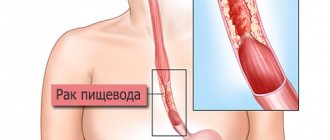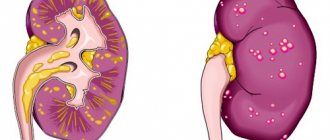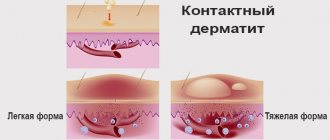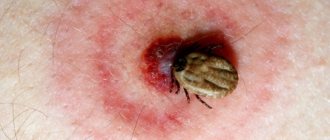general information
Sexually transmitted diseases ( STDs ) or sexually transmitted infections ( STIs ) are infections that are usually, but not exclusively, transmitted from person to person through sexual intercourse.
- Sexually transmitted diseases are caused by bacteria, viruses or protozoa.
- There are infections that can be spread through kissing or close skin-to-skin contact.
- Some infections also spread to other parts of the body and sometimes lead to serious consequences.
- Using condoms helps prevent the transmission of such infections.
- Most sexually transmitted diseases can be effectively treated with medications.
Sexual intercourse allows organisms to spread (pass) from one person to another because it involves close contact and the transfer of genital and other body fluids.
Sexually transmitted diseases (STDs), also called sexually transmitted infections (STIs), are relatively common. For example, approximately 10 million new cases of STDs occur every year in Russia. About half of the new cases are in people aged 15 to 24 years. In 2020, there were over 460,000 newly diagnosed cases of gonorrhea and more than 1.6 million chlamydial infections, and many more are likely to have developed, i.e. these two infections are the most common STDs.
Several factors make it difficult to prevent STDs. These include:
- Unprotected sex with multiple partners (whose names may not be known and therefore may be difficult to find)
- Reluctance to talk about sexual problems with a doctor
- The need for more funding to identify and treat as many infected people as possible, and to develop better diagnostic tests and treatments for STDs
- The need for simultaneous treatment of both sexual partners if one of them is infected
- Incomplete treatment, which may lead to the development of drug-resistant microorganisms
- Traveling to different countries causes STDs to spread rapidly around the world
Classification
Infectious diseases that are sexually transmitted include[1]:
- bacterial infections: granuloma inguinale (donovanosis), chancroid, syphilis, lymphogranuloma venereum, chlamydia, gonorrhea, mycoplasmosis, ureaplasmosis;
- viral infections: HIV, genital herpes, genital warts caused by human papillomavirus, hepatitis B, cytomegalovirus (human herpesvirus type 5), molluscum contagiosum, Kaposi's sarcoma (herpes type 8);
- protozoal infections: trichomoniasis;
- fungal infection: candidiasis (thrush);
- parasitic diseases: phthiriasis, scabies;
Diseases such as candidal colpitis, nonspecific urethritis and bacterial vaginosis, caused by opportunistic and saprophytic microflora, do not belong to sexually transmitted diseases, but are often considered in conjunction with them (and are mistakenly classified as them by non-specialists).
Bacterial infections
Symptoms of syphilis
- Inguinal granuloma
(lat. granuloma inguinale) is an infectious disease caused by bacteria of the species
Calymmatobacterium granulomatis
. - Chancroid
(lat. Ulcus Molle) is an infectious disease that is sexually transmitted. The causative agent of the disease is the bacterium Haemophilus ducreyi. The disease is distributed mainly in Africa, Central and South America. It is extremely rare in Russia. - Syphilis
(old:
lues
) is a chronic systemic venereal infectious disease with damage to the skin, mucous membranes, internal organs, bones, nervous system with a successive change of stages of the disease, caused by bacteria of the species Treponema pallidum (pallidum pallidum) subspecies pallidum, belonging to the genus Treponema (
Treponema
) (From ancient Greek τρέπω - turn, νῆμα - thread) of the family
Spirochaetaceae
(From ancient Greek σπεῖρα - curl, χαίτη - long hair)[2]. - Lymphogranuloma venereum (Durand-Nicolas-Favre disease)
is a chronic sexually transmitted disease.
The causative agent is the invasive Chlamydia trachomatis
. It is characterized by specific damage to the inguinal, femoral, iliac and deep pelvic lymph nodes. - Chlamydia
is a sexually transmitted infectious disease caused by chlamydia (
Chlamydia trachomatis
). It is one of the most common sexually transmitted infectious diseases. According to statistics, 100 million people in the world fall ill with chlamydia every year, and the number of people infected with chlamydia around the globe, according to the most conservative estimates, reaches one billion. According to WHO and numerous domestic and foreign researchers, urogenital chlamydia is one of the most common sexually transmitted diseases, so a serious problem for modern venereology is the search for the most effective means of treating so-called non-gonococcal inflammatory diseases of the genitourinary system. - Gonorrhea
(from the ancient Greek γόνος “seminal fluid” and ῥέω “flow”) is an infectious disease caused by a gram-negative diplococcus - gonococcus lat. Neisseria gonorrhoeae, sexually transmitted and characterized by damage to the mucous membranes of the genitourinary organs. Refers to sexually transmitted diseases. With gonorrhea, the mucous membranes of the genital tract are most often affected, but the mucous membrane of the rectum and conjunctiva can be affected (in this case, the disease is called blenorrhea). - Mycoplasmosis
is a chronic infection, most often affecting the genitourinary system, caused by mycoplasmas. Mycoplasma is an opportunistic microorganism and can be present in the normal microflora of the vagina and urethra without causing discomfort. - Ureaplasmosis
is a disease caused by a specific microorganism Ureaplasma urealyticum (ureaplasma urealyticum), which belongs to Gram-negative microbes lacking a cell wall. An infection can enter the human body at birth from a sick mother: microbes can enter the child’s genital tract during childbirth and remain there for life, being in an inactive state. Thus, when examining children, vaginal colonization with ureaplasma is detected in 5%.
Viral infections
- HIV
is a human immunodeficiency virus that causes the disease HIV infection, the final stage of which is known as acquired immunodeficiency syndrome (AIDS), as opposed to congenital immunodeficiency. - Herpes simplex virus type 2
(Herpes simplex virus 2, HSV-2, Human herpesvirus 2) is a species of the
Herpesviridae
that causes genital infections in humans (genital herpes)[3]. This virus is neurotrophic and neuroinvasive, meaning that after infection it migrates into the nervous system. The virus is especially dangerous for people with weakened immune systems, such as people living with HIV, and for those who have recently had an organ transplant, as the medications used in transplantation suppress the immune system.[4] - Genital warts
are a type of condylomas that are small, flesh-colored growths that can appear on the genitals, around the anus, and sometimes in the mouth. As a rule, they are caused by a viral infection caused by the pathogen - human papillomavirus (HPV). - Human papillomavirus
(
HPV
-
Human Papillomavirus
) is a virus from the genus papillomaviruses, the family of papovaviruses. It is transmitted only from person to person and leads to changes in the nature of tissue growth. More than 100 types of HPV are known. Of these, more than 40 can cause damage to the anogenital tract (genitals and anus) of men and women and the appearance of genital warts. Some are harmless, others cause warts, and some cause cancer. - Hepatitis B
is a viral disease caused by the hepatitis B virus (in specialized literature it can be referred to as “HB virus”, HBV or HBV) from the hepadnavirus family. The virus is extremely resistant to various physical and chemical factors: low and high temperatures (including boiling), repeated freezing and thawing, and prolonged exposure to an acidic environment. In the external environment at room temperature, the hepatitis B virus can persist for up to several weeks: even in a dried and invisible blood stain, on a razor blade, or the end of a needle. In blood serum at a temperature of +30°C, the infectivity of the virus persists for 6 months, at −20°C for about 15 years. Inactivated by autoclaving for 30 minutes, dry heat sterilization at 160°C for 60 minutes, heating at 60°C for 10 hours. - Cytomegalovirus
(CMV) is a genus of viruses of the herpesvirus family (
Herpesviridae
). The scientific name is derived from ancient Greek. κύτος - cell + μέγας - large + lat. virus - poison. A representative of the genus Human herpesvirus 5 (HCMV-5, or human herpesvirus type 5) is capable of infecting people, causing them to develop Cytomegaly. - Molluscum contagiosum
(novolat. molluscum contagiosum) is a skin disease caused by one of the smallpox viruses. Usually the skin is affected, sometimes the mucous membranes. The infection most often occurs in children aged one to ten years. The infection is transmitted through direct contact with a patient or through contaminated household items. Typically, a viral infection in adults leads to the formation of raised nodules on the external genitalia, thighs, buttocks, or lower abdomen. They have a hemispherical shape. The color matches the normal skin color or is slightly pinker. In the middle of the hemisphere there is a depression, somewhat reminiscent of a human navel. The size of these painless lesions, which usually appear 3-6 weeks after infection, varies from 1 mm to 1 cm in diameter; they are pinkish-orange in color with a pearlescent tip. When you press on the nodule, a cheesy plug emerges from it, like an eel. Most often, molluscum contagiosum does not cause serious trouble and disappears on its own within about 6 months; therefore treatment is not required in all cases. - Kaposi's sarcoma
(Kaposi's angiosarcoma) is a multiple malignant neoplasm of the dermis (skin). It was first described by the Hungarian dermatologist Moritz Kaposi and named after him. - Zika virus
from the genus Flavivirus.
Protozoal infections
Main article: Trichomoniasis
Trichomoniasis
ranks first in prevalence among diseases of the genitourinary tract.
In addition, trichomoniasis holds primacy among sexually transmitted diseases. According to the World Health Organization (1999), 10% of the world's population suffers from trichomoniasis. Trichomoniasis is diagnosed annually in about 170 million people. The causative agent is Trichomonas vaginalis
.
Trichomoniasis is dangerous primarily due to serious consequences in the form of complications that can cause infertility, pregnancy pathologies, and the like. The main habitat of trichomoniasis in the male body is the urethra, prostate gland and seminal vesicles, and in the female body - the vagina. However, when it first enters the body, Trichomonas always causes urethritis. Infection occurs through sexual contact through contact with a patient or carrier of the infection. The incubation period is 1-4 weeks.
Fungal infections
Main article: Candidiasis
Candidiasis
(
thrush
) is a type of fungal infection caused by microscopic yeast-like fungi of the genus Candida
(Candida albicans)
. All representatives of this genus are classified as opportunistic [5].
Microorganisms of the genus Candida are part of the normal microflora of the mouth, vagina and colon of most healthy people. The disease is caused not simply by the presence of fungi of the genus Candida
, but by their multiplication in large numbers, and/or the introduction of more pathogenic strains of the fungus. Most often, candidiasis occurs with a decrease in general and local immunity.
Parasitic diseases
Main articles: Ftiriaz
and
Scabies
- Phthiriasis
(
pediculosis pubis
; lat. Pediculosis pubis, Phthiriasis) is entomosis, a parasitic venereal skin disease caused by pubic louse. - Scabies
(lat. scabies) is a contagious skin disease, acariasis from the group of acarodermatitis, caused by a microscopic parasite - the scabies mite or scabies itch (lat. Sarcoptes scabiei var. hominis). The name of the pathogen comes from ancient Greek. σάρξ (meat, pulp), κόπτειν (gnaw, tear, cut) and lat. scaber (comb). Characteristic signs of the disease are itching and papulovesicular rash, often with the addition of secondary pustular elements due to infection during scratching. The word “scabies” itself has the same root as the verb “to itch”[6].
Causes and risk factors
Many infectious organisms—from tiny viruses, bacteria and parasites to insects visible to the naked eye (such as lice)—can be transmitted sexually. Some infections can also be transmitted during sexual intercourse, but most often they are transmitted through other means. Therefore, they are not considered STDs. These infections include hepatitis A, B and C and digestive tract infections (which cause diarrhea) such as salmonella infections, campylobacter infections, shigellosis, giardiasis and amoebiasis.
— Types of sexually transmitted diseases.
| Type | Disease |
| Bacterial | Chancroid Chlamydial urethritis and cervicitis Gonorrhea Granuloma inguinale Lymphogranuloma venereum Syphilis |
| Viral | Simple genital herpes Genital warts (caused by human papillomavirus) Human immunodeficiency virus (HIV) or AIDS Molluscum contagiosum (caused by poxvirus) |
| Parasitic (protozoa) | Trichomoniasis |
| Arthropods | Pediculosis Scabies (caused by scabies mites) |
- Transfer.
Although STIs are typically caused by vaginal, oral, or anal sex with an infected partner, genital penetration is not necessary for the infection to spread. Some STIs are spread in other ways, including
- Kissing or close physical contact: infection with lice, scabies and molluscum contagiosum;
- From mother to child before or during birth: syphilis, herpes, chlamydial infection, gonorrhea, human immunodeficiency virus (HIV) and human papillomavirus (HPV);
- When breastfeeding: HIV infection;
- Contaminated medical instruments: HIV infection.
Complications and consequences
The manifestation of symptoms is individual for each illness, but failure to seek help in a timely manner can lead to difficult circumstances and health problems. That is why it is important to monitor your health and protect yourself, otherwise complications of various kinds may arise.
For example:
- Infertility.
- The transition of the problem to a chronic form, which is more difficult to deal with.
- The infection spreads throughout the body, causing other lesions to appear.
- Oncological diseases.
We hope that the article was useful and informative; you were able to find out a lot of information, for example, after what time the first symptoms appear in men and women, as well as what tests are included in STDs. We are confident that you will try to follow preventative rules to prevent contracting any infection.
Signs and symptoms
Symptoms of STDs vary, but the first symptoms usually appear where the microorganisms enter the body. For example, ulcers may form in the genital area or mouth. There may be discharge from the penis or vagina. Urination may be painful.
Some of the symptoms increase the risk of contracting other infections (such as HIV infection). For example, skin irritation (inflammation, such as occurs with gonorrhea or chlamydial infection) or ulcers (as occurs with herpes, syphilis, or chancroid) make it easier for other pathogens to enter the body.
- Complications.
If STDs are not diagnosed and treated promptly, some organisms can spread through the bloodstream and infect internal organs, sometimes leading to serious and even life-threatening consequences. Such consequences include:
- Cardiovascular and brain infections caused by syphilis;
- AIDS caused by HIV;
- cancer of the cervix, rectum, anus and throat caused by HPV.
In women , some microorganisms that enter the vagina can infect other reproductive organs. The organisms can infect the cervix (the lower part of the uterus that forms the upper part of the vagina) and, once in the uterus, can reach the fallopian tubes and sometimes even the ovaries. Damage to the uterus and fallopian tubes can lead to infertility or ectopic pregnancy. The infection can spread into the lining that lines the abdomen (peritoneum), causing peritonitis. Infections of the uterus, fallopian tubes, ovaries and/or peritoneum are called pelvic inflammatory disease.
In men , microorganisms that enter through the penis can infect the duct that carries urine from the bladder (urethra). Complications with early treatment of infection are rare, but chronic urethral infection can cause the following:
- Thickening of the foreskin so that it can no longer cover the head of the penis;
- Narrowing of the urethra, which blocks the flow of urine;
- Development of an abnormal canal (fistula) between the urethra and the skin of the penis.
In some cases, in men, the organisms spread up the urethra and travel through the duct that carries sperm from the testicles [the vas deferens], infecting the epididymis (the folded duct on top of each testicle that runs from the penis to the epididymis).
In both sexes, some STDs can cause persistent swelling of the genital tissues or infection of the rectum (proctitis).
Gonorrhea
Gonorrhea is a sexually transmitted infectious disease caused by gonococcus. Gonorrhea most often affects people aged 20-30 years. In most cases, infection occurs through sexual contact (vaginal, anal, oral). As a rule, the source of infection is women, since their disease can be asymptomatic and difficult to diagnose. It is possible for a newborn to become infected from a sick mother during childbirth.
Symptoms of the disease appear 3-5 days after infection. Women experience yellowish-white discharge, pain in the lower abdomen and intermenstrual bleeding, but there may be a complete absence of any symptoms.
In men, the primary form of infection is gonorrheal urethritis, which is characterized by itching and burning of the external opening of the urethra, which intensifies with urination. Then profuse purulent discharge begins, as well as severe redness and swelling of the external opening of the urethra.
There are two forms of gonorrhea:
- acute (up to 2 months);
- chronic (more than 2 months).
Gonococcus can enter the human body simultaneously with other sexually transmitted infections (ureaplasma, chlamydia, gardnerella, trichomonas), which leads to a mixed infection of the genitourinary tract. The most common combination of gonococcal infection with chlamydia and ureaplasma. Given that these infections are not sensitive to most drugs used to treat gonorrhea, additional laboratory tests and longer therapy are required.
Gonococcal infection can cause:
- urethritis
- proctitis
- stomatitis
- pharyngitis
- gonorrhea eyes
Complications of gonorrhea
- In men, the most common complication is inflammation of the epididymis - epididymitis.
- In women, the most common complication of gonorrhea is inflammatory diseases of the uterus and appendages, which are one of the main causes of female infertility. At the same time, the intrauterine device and menstruation increase the risk of inflammatory diseases of the uterus and appendages.
- When gonococci spread to other organs, disseminated gonococcal infection occurs. This affects the joints, skin, brain, heart and liver.
- When gonococci get into the eyes, gonococcal conjunctivitis occurs.
Diagnosis of gonorrhea
Symptoms alone are not enough to diagnose gonorrhea. Confirmation of the diagnosis by laboratory methods is necessary.
Diagnosis of acute gonorrhea in men is usually based on the results of a general smear. For chronic gonorrhea in men, as well as for any form of the disease in women, more accurate research methods are needed - PCR or culture.
Sexual partners
If you are cured but your sexual partner is not, you can easily become infected again.
It is very important to tell your sexual partners about the disease, even if they are not worried, and to encourage them to get tested and treated. After all, being asymptomatic does not reduce the risk of complications.
Diagnostics
Most often, doctors diagnose STIs based on symptoms.
For many STDs, there are few or no tests to determine the cause. That's why doctors sometimes don't do tests to determine the cause. Instead, they choose treatment based on which microorganisms are most likely to cause the symptoms. In addition, doctors may provide treatment during a patient's first visit, before test results are received (usually a few days), in case the patient does not return after receiving the test results.
To identify the organisms and confirm the diagnosis, your doctor may order blood, urine, or swab tests of vaginal or penile discharge. The sample is sent to a laboratory to grow the organisms (culture), which helps identify them.
Some STD tests are designed to detect a microorganism's unique genetic material (DNA or RNA). Sometimes methods are used that increase the amount of genetic material in bacteria. These tests are called nucleic acid amplification tests (NAATs). Because these methods are easier to detect microorganisms, urine samples can be used for testing. Other tests check for antibodies, which are produced by the immune system in response to the specific microorganism that is causing the infection. The doctor chooses the type of examination based on the suspected STD.
If a person is diagnosed with one STD, such as gonorrhea, doctors also order tests to detect other STDs, such as chlamydia, syphilis and HIV infection. Doctors order other tests because people with one STD have a relatively high likelihood of having one or more other ones.
Symptoms in men
The male body is structured differently, so it is more difficult to suspect a disease of this type in them. The patient should pay attention to such signs as:
- the appearance of blood in semen;
- the appearance of pain in the scrotum;
- constant urge to urinate, accompanied by pain;
- problems with ejaculation;
- the presence of discharge from the urethra, it can be purulent, with an odor or white;
- increased body temperature (in some cases of infection);
- the appearance of rashes in the area of the glans penis, as well as on the penis itself;
Note! Many diseases occur without significant symptoms, so it is important to get tested every six months. If signs similar to an STD appear, you should immediately get tested, this will help avoid possible complications.
Treatment
Treatment for STDs includes:
- Antibiotics or antiviral drugs depending on the STD;
- Simultaneous treatment of sexual partners.
Most STDs can be effectively treated with medications (antibiotics for bacterial infections and antivirals for viral infections). However, new strains of bacteria and viruses have become resistant to some drugs, making treatment much more difficult. Drug resistance is likely to increase because drugs are sometimes taken inappropriately.
People being treated for bacterial STDs should abstain from sexual intercourse until the infection is cleared for themselves and their partners. Therefore, sexual partners should be tested and treated at the same time.
Viral STDs, especially herpes and HIV infection, most often remain for life. Antiviral drugs can control but do not yet cure these infections.
Possible ways of contracting STDs
The main methods of contracting STDs:
- Vaginal.
- Anal.
- Oral.
Nothing depends on the gender of the patient; both women and men are susceptible to diseases. Many viruses are transmitted through the genitals even without penetration, which is typical for herpes. Infection is possible after contact with the patient's skin or minor damage. Hepatitis B and HIV are transmitted through blood and needles.
Even contraceptives cannot provide 100% guarantee and protection, so you should always follow the instructions for use.
Prevention
The following methods will help prevent STDs:
- Regular and correct use of condoms;
- Avoiding unsafe sexual activity, such as changing sexual partners frequently or having sex with partners who have other sex partners;
- Circumcision (reduces the spread of HIV from women to men);
- Immediate diagnosis and treatment of STDs (to prevent transmission of the disease to others);
- Identification of sexual partners of infected persons, consultation or treatment of such partners.
Abstaining from sex (anal, vaginal and oral) is the most reliable, although often unrealistic, way to prevent STDs.
The only vaccines available are for HPV infection, hepatitis A and hepatitis B.
— How to use a condom?
- Use only a new condom for each sexual act.
- Use the correct size.
- Handle the condom carefully so as not to damage it with nails, teeth or sharp objects.
- Wear a condom after you get an erection and before you have genital contact with your partner.
- Determine which way to unroll the condom by placing it on your index finger and trying to gently unroll it, but only slightly. If that doesn't work, turn it over and try the other way. Then roll it up completely.
- Place the rolled condom on the head of the erect penis.
- Leave about 1 centimeter of the tip of the condom free to collect sperm.
- Squeeze the reservoir of the condom with one hand to release the air.
- If you are uncircumcised, pull back your foreskin before spreading the condom.
- With your other hand, straighten the condom towards the base of the penis and squeeze out any air bubbles.
- Make sure there is sufficient lubrication during intercourse.
- Only water-based lubricants are used with latex condoms. Oil-based lubricants (such as petroleum jelly, tallow, mineral and massage oils, body lotions, and cooking oil) can damage latex and cause the condom to break.
- Hold the condom firmly against the base and remove the penis while it is still erect to prevent the condom from slipping and leaking.
Forecast
Most STDs respond well to treatment. However, many patients develop recurrent episodes of STDs because their sexual partners do not receive treatment or because they continue to be exposed to STDs through unprotected sex. To avoid recurrence of the disease, sexual partners usually also need treatment.
Genital herpes cannot be cured because the virus remains dormant in the nerves for the rest of the patient's life. However, many people do not notice any problems after the initial infection, and many do not even notice when they first become infected. Among people who notice herpes outbreaks, about 40 percent experience more than 6 outbreaks during their lifetime; while less than 10 percent have more than 6 outbreaks per year. In patients with herpes simplex virus type II, antiviral therapy can successfully suppress recurrent episodes of genital ulcers.
HIV cannot be cured. But with regular medical care, monitoring and treatment, most people with HIV live for many years with minimal or no symptoms.











